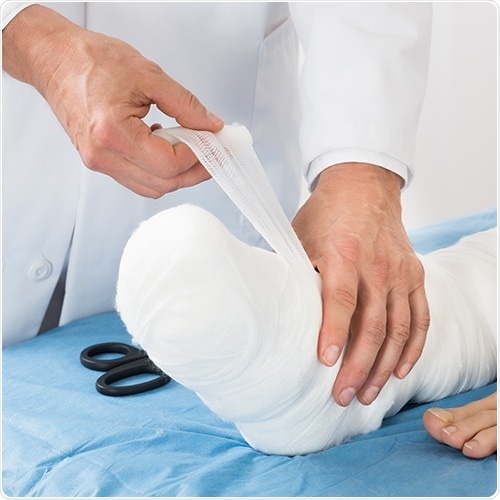World-first plasma-coated bandages with the power to attack infection and inflammation could revolutionize the treatment of chronic wounds such as pressure, diabetic or vascular ulcers that won't heal on their own.

Developed by the University of South Australia, the novel coating comprises a special antioxidant which can be applied to any wound dressing to simultaneously reduce wound inflammation and break up infection to aid in wound repair.
In Australia, nearly half a million people suffer from chronic wounds, costing the health system an estimated AUD$3 billion each year. It’s a similar picture around the world with more than 5.7 million people suffering from chronic wounds in the United States, costing the economy an estimated USD$20 billion each year; and in the UK, more than 2 million people are currently living with chronic wounds at a cost of £5 billion per year.
With growing rates of global obesity, diabetes and an aging population, chronic wounds are increasingly affecting large proportions of the general population, yet until this breakthrough discovery, few treatments have shown such positive results.
Lead researcher, Dr. Thomas Michl, from UniSA STEM, says that upgrading current dressings with this state-of-the-art coating will promote effective healing on chronic wounds and reduce patient suffering.
Proper care for chronic wounds requires frequent changes of wound dressings but currently, these wound dressings are passive actors in wound management.
Our novel coatings change this, turning any wound dressing into an active participant in the healing process – not only covering and protecting the wound, but also knocking down excessive inflammation and infection.
No other method achieves this to date.”
Dr. Thomas Michl, Lead Researcher from UniSA STEM
The technology is highly scalable and sustainable, making it a viable option for broad application worldwide.
The team is now investigating the shelf-life of the coatings with encouraging results. Next steps are pre-clinical trials with products potentially available in two to three years.